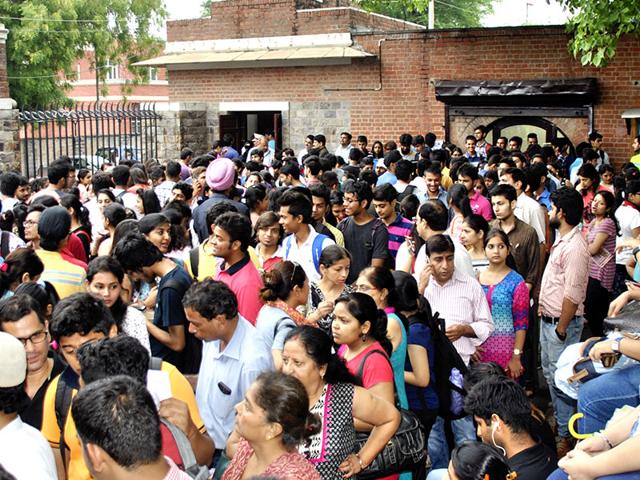DU can’t hold all, students need more quality options
Last week, the Delhi University’s cut-offs reached a bizarre high. The university had earlier announced that a student coming from a different stream would require 2.5% more than the eligibility percentage declared for a course. Add that to the 100% cut-off declared by some colleges and it becomes an impossible ask.
Last week, the Delhi University’s cut-offs reached a bizarre high. The university had earlier announced that a student coming from a different stream would require 2.5% more than the eligibility percentage declared for a course. Add that to the 100% cut-off declared by some colleges and it becomes an impossible ask.

The cut-offs were best described on Twitter as fitting only for “Rajnikanth”. While the university is yet to come across a super-hero to venture into the realm of impossibility, two students who scored 100% in four subjects did take admission to Shri Ram College of Commerce (SRCC). The 100% cut-off is, however, not a new trend. Four years ago, when SRCC, for the first time, asked for a perfect 100 in a certain subject combination for admission to B.Com. (Hons), the then HRD minister Kapil Sibal shared the mass outrage and promised “over-arching reforms”. But the college did get candidates who made the cut.
In Delhi’s marks-market dynamics, too many high-scoring students compete for few good options for undergraduate courses. For most popular courses in top colleges, cut-offs have consistently stayed above 90% and the seats are lapped up fast. This year, DU got applications from 35,849 students who had scored above 90%. They are enough to fill 64% of the DU’s 54,000 seats. In fact, as many as 6,850 applicants have come with 95% or more.
As we await reforms, the numbers spiral out of control. In 2011, 4,000 had scored 95% and above in the CBSE boards across India. Last year, the CBSE’s 95% club went up to 8,971. With limited seats available at DU, such demand inevitably leads to unreal cut-offs.
Last year, HT tried to find out how so many students were scoring such high marks. We found that in 2004-05, as a de-stressing measure, CBSE shifted its policy from testing what a student does not know to what she actually knows. Long-answer-type questions were reduced to minimise subjectivity and objective-type questions were introduced. No wonder, students are scoring 100% in English and history.
The dumbing down of the examination system has not only created a false sense of academic excellence among students by awarding them undeservingly high marks at school, it has also fuelled a rat race that is unsustainable. It is the exam system itself that needs reform.
As for DU, it is paying the price for building a reputation. Why else should one university be expected to accommodate the increasing load of students from across India when it is already cracking under its own weight? Conducting admissions, supervising operations, holding examinations and evaluating students of such large numbers of constituent colleges is already an administrative nightmare at DU. With little uniformity in academic standards, teaching quality and availability of infrastructure, getting consensus on any kind of policy reform has become a huge challenge.
Yet, DU is accused of being competitive and turning away students, often by the same dispensation that has done precious little to provide good alternatives. It is not DU’s responsibility to keep increasing the number of seats or colleges. As strategy reviews such as the one by the National Knowledge Commission and the National Policy on Education before that have pointed out, large universities are a bad idea.
What our students need are more quality institutes across the country and also in Delhi. They certainly deserve something more than an affiliating body that holds together random private institutes. It is time we open smaller and efficient institutes and delink some colleges from the affiliating structure, allowing them academic and operative freedom, an experiment that has worked well in the case of Kolkata’s Presidency and Bangalore’s Christ College.
With administrative reforms and initiatives, we also need to change our mindset and look beyond DU. Set up in 2008, Delhi’s Ambedkar University has handpicked its teaching faculty from some of the top institutes in the country and runs inter-disciplinary schools and centres rather than a monolith unit. The government has the prototype. All it needs is the political will.




